What data recovery tools to buy if you want to start a data recovery business?
Free video data recovery training on how to recover lost data from different hard drives?
Where to buy head and platter replacement tools at good prices?
Data recover case studies step by step guide
I want to attend professional data recovery training courses
There are different kind of storage medias like Hard Disks, Optical Discs, Tape Media, Flash Drive, Zip Catridges, RAID, Removable Media, (U)niversal (B)us (S)erial, etc.
>>HARD DISKs
Once known as the Winchester drive, the hard disk or hard drive is an essential hardware that every computer desktop and server contain. And its functionality, is to store vast amount of digital data in a non-volatile form, so that data can be retained when the computer is powered off. Data is again accessed when the power is on.
>>Optical Disc
An optical disc is a flat piece of circular polycarbonate plastic containing a non-volatile recording medium that stores digital information.
Data is then accessed with a laser diode illuminating on its recording medium. To date, many forms of optical disc have been developed. Each generally enjoys a span of popularity of use before newer discs with greater capacity and capability are introduced into the market. Nearing obsolete media includes Laser disc and Video CD (VCD) while trendy media such a CD (compact disc), CD-R, CD-RW, DVD-R, DVD-RW continue to thrive in our world of digital data and storage.
>>Tape Media
A tape drive is a peripheral hardware device that reads and writes data into non-volatile magnetic tapes. A magnetic tape that resembles a conventional audio cassette tape, contains a magnetized coating on a thin plastic strip which data is written on.
Unlike dynamic and random storage mediums such as hard disks and flash drives, a tape drive operates using indexing and sequential-access. You have to run a tape from beginning to the end to perform a read or write operation. This means that data is written to the tape in one continuous stream.
To read a particular piece of information, the tape must wind past all preceding data to access it. Quite simply, a tape drive is like a cassette recorder that stores large volumes of digital data. Due to its cost efficiency and long shell life, tape drive makes a popular device for backup and archival purposes.
>>Flash Drive
Equipped with a NAND-type flash memory and integrated with a USB 1.1 or 2.0 interface, a flash drive is a removable, compact and non-volatile data storage device that acts like a portable hard disk. However unlike the size of the latter, a flash drive is usually no longer than a cigarette lighter and only weighs half an ounce.
>>Zip Cartridges
Looking akin to their 1.44MB floppy disk predecessors, IOMEGA zip disks are sized slighter bigger but armed with the capacity to store over 100 to 700 times more data.
The Zip data drive was released in the late 1994 by IOMEGA as a removable storage solution to be used in mainstream IBM PCs and Macintosh computers. At that time, as the choices of storage meida are few, Iomega Zip soon took over the storage market by storm. Due to its proprietary nature, a zip drive is used to access the disks.
>>RAID
To understand RAID, imagine multiple disk drives that are put together and interlinked in an array to obtain greater performance, capacity and reliability. RAID is an acronym for Redundant Array of Independent Disks – the technique that was developed by researchers at the University of California at Berkeley during 1987 to overcome the limitation and deficiency imposed by a single hard disk.
>>Universal Serial Bus (USB)
Nowadays, Universal Serial Bus (also known as USB) is considered a very simple and flexible way of connection between personal computer (PC) and numerous of peripherals. With USB booting supported by your computer motherboard’s BIOS, devices such as mouse, printer, digital camera, webcam, speaker, modem, network connection…etc, it can now be connected to your computer at ease through USB port (i.e. USB hub). This feature, when being compared with serial or parallel port connection, is critically advantageous since it offers much more convenience in terms of speed, mobility and flexibility.
>>Removable Storage
Removable storage is computer storage memory that can be switched out easily. EG: A floppy disk is removable storage but the hard drive is not considered to be removable storage.
The various kinds of removable storage technologies include:
MAGNETIC DISK
Data is read from and written onto a surface embedded with minute magnetic particles by a head. In hard drives, the head floats above the surface, while in a floppy disk the head rides on the surface.
OPTICAL
Data is read and written with laser onto a material protected by a substrate. High capacity storage immune to magnetic and other environmental dangers. This includes CDs (Compact Disc), WORMs (Write Once Read Many), EOs (Erasable Optical), MD (Mini Discs), and DVD (Digital Video Disc).
MO
(Magneto-Optical). Data is written by bringing points to the Curie point (approximately 200 C) via laser and then data encoding the point via a magnetic head. Data is read by a laser taking advantage of the Kerr Effect, i.e. the difference in the polarity of reflected light depending on the orientation of magnetic particles.
* 5.25 in @ 2.6 GB.
* 3.5 in @ 128 MB – 230 MB – 530 MB – 640 MB – 1.3 GB
LIMDOW
(Light Intensity Modulated Direct OverWrite). Like MO except that instead of a magnetic head, the temperature of the laser can reverse the polarity of magnetic layers within the disk itself. Thus LIMDOW is faster because it only takes one pass in contrast with MO’s two passes.
PHASE CHANGE
Data is written via heating pits via laser. The laser can amorphize the spot, or, upon reheating return the spot to its originals state by recrystallization. This is technology utilized by Panasonic’s PDs (Phase change Disks).
FLASH
Data is read and written to a memory chip. These are usually quickly accessed by the USB port.
Except for magnetic disk technology, the removable storage technologies are usually used for static data. EG: CDs are usually written onto once.
* Floppy disk.
Current version spins at 300 rpm with 135 tracks/inch. These magnetic disks store bits via magnetic inversions at intervals of 2-4 microseconds along its tracks.
o 5.25 inch at different capacities:
+ 160 kB (1981)
+ 180 kB
+ 360 kB (double sided)
+ 1.2 MB
o 3.5 inch at different capacities:
+ 720 kB (1984)
+ 1.44 MB (1987)
* Memory sticks.
8 MB to 512 MB. These are flash memory storage sticks that usually plug into a USB port.
o M-System makes the thumb-sized DiskOnKey product (2002) which is USB 2 compliant and has a 1 MB/s transfer rate.
o ThumbDrive makes the ThumbDrive product (2002) which reads at 700 KB/s and writes at 350 KB/s. The ThumbDrive also has access security by fingerprint.
* Floppy replacement.
100 MB to 150 MB.
o 3.5 in Iomega Zip Disk, 94 MB (1995), magnetic disk with 3000 rpm. 1 MB/s data transfer and 29 ms seek time. Utilizes the Bernoulli aerodynamic principle where the flexible surface is sucked up to the read/write head. Interfaces via parallel port, SCSI, ATAPI, or USB. In wide use in 1999.
o 3.5 in Imation Super Disk LS-120 (Laser Servo), 120 MB (1998) magnetic disk with 720 rpm. 450 KB/s data transfer and 70 ms seek time, i.e. 5 times faster than a floppy but slower than a Zip Disk. Backwards compatible to floppy disks. Interfaces via IDE. Recognized by BIOSes as a fail-safe start up drive. 2490 tracks/inch.
o 3.5 in Sony HiFD, 200 MB (1999) magnetic disk with 3600 rpm. 3.6 MB/s data transfer. Backward compatible with floppy disks.
* Supper floppy
200 MB to 300 MB. Magnetic or MO devices. Includes Iomegas 237/250 MB Zip Disk.
* Hard disk complement.
500 MB to 1 GB. Magnetic, MO, and phase change devices. Like a hard disk partition. May function as a secondary but slow hard disk.
* Removable hard disk.
1 GB plus. Magnetic, MO, and phase change. Like small, fast hard disks.
o Iomega Jaz Disk, 1-2 GB (1996). 5.4 MB/s data transfer and 12 ms seek time. Interfaces via IDE, SCSI, and Ultra SCSI.
o SyQuest’s SyJet, 1.5 GB (1997) and 1.0 GB SparQ (1998). Bought out by Iomega.
o 3.5 in Castlewood Systems ORB, 2.2 GB (1999). 12.2 MB/s and 12 ms seek time. Fast enough to stream audio and video! Runs cooler than the Iomega Jaz. Interfaces via parallel port, USB, SCSI, Ultra SCSI, and EIDE.
Data recovery Salon welcomes your comments and share with us your ideas, suggestions and experience. Data recovery salon is dedicated in sharing the most useful data recovery information with our users and only if you are good at data recovery or related knowledge, please kindly drop us an email and we will publish your article here. We need to make data recovery Salon to be the most professional and free data recovery E-book online.

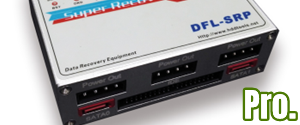
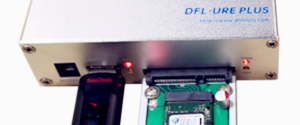
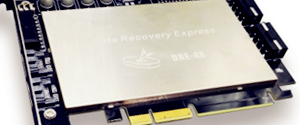

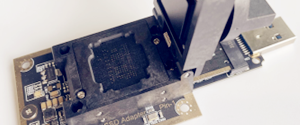
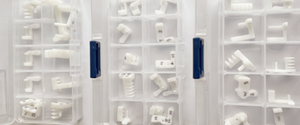
Comments are closed
Sorry, but you cannot leave a comment for this post.